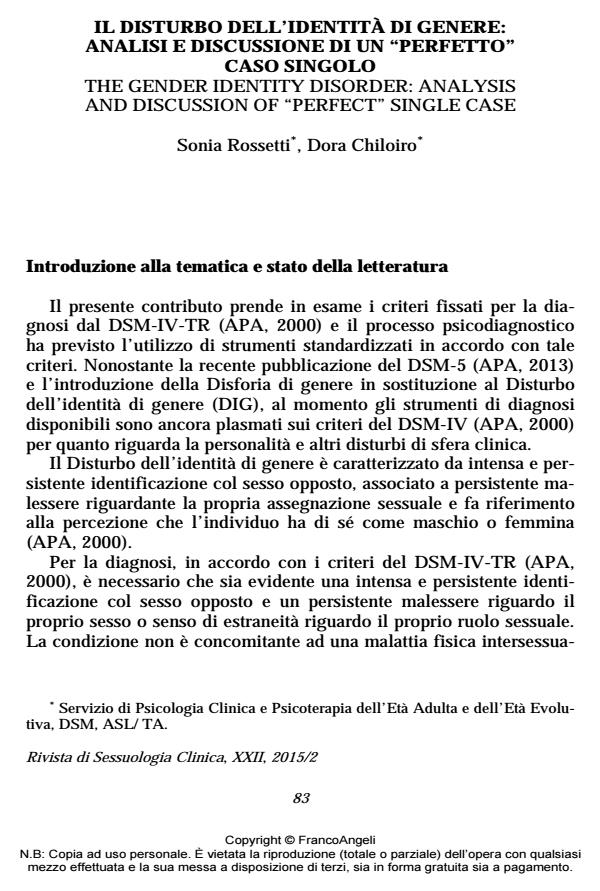The gender identity disorder: analysis and discussion of "perfect" single case
Journal title RIVISTA DI SESSUOLOGIA CLINICA
Author/s Sonia Rossetti, Dora Chiloiro
Publishing Year 2015 Issue 2015/2
Language Italian Pages 14 P. 83-96 File size 86 KB
DOI 10.3280/RSC2015-002004
DOI is like a bar code for intellectual property: to have more infomation
click here
Below, you can see the article first page
If you want to buy this article in PDF format, you can do it, following the instructions to buy download credits

FrancoAngeli is member of Publishers International Linking Association, Inc (PILA), a not-for-profit association which run the CrossRef service enabling links to and from online scholarly content.
The Gender Identity Disorder is a clinical condition characterized by a lack integration between the biological sex genetically determined and the representation of their sexual identity. In this condition person not recognize in their sexual role experiencing a series of emotional experiences contrasting and characterized by a desire to change their appearance. The objective of this work is to provide a general overview about the disorder and legal procedures for surgical reconstruction of sex. The authors discuss the clinical case of a patient evaluated at the S.C. of Clinical Psychology and Psychotherapy Adult and Developmental Ages’ to the ASL of Taranto. The focus will be on the psychodiagnostic survey used to arrive at the diagnosis. The aim is to portray the perfect psychological conditions that a person with such clinical condition should possess in order to receive authorization for surgical reconstruction of sex.
Keywords: Gender identity disorder, transgender, transsexual, psychodiagnostic examination, diagnosis, surgical sex reassignment.
Sonia Rossetti, Dora Chiloiro, Il disturbo dell’identità di genere: analisi e discussione di un "perfetto" caso singolo in "RIVISTA DI SESSUOLOGIA CLINICA" 2/2015, pp 83-96, DOI: 10.3280/RSC2015-002004